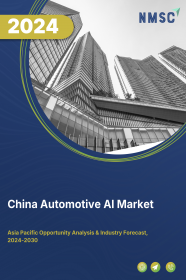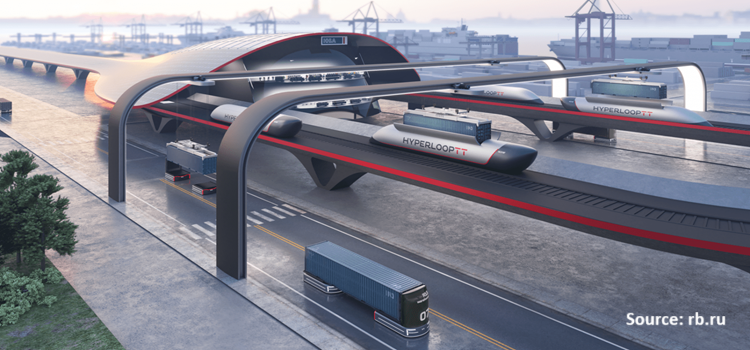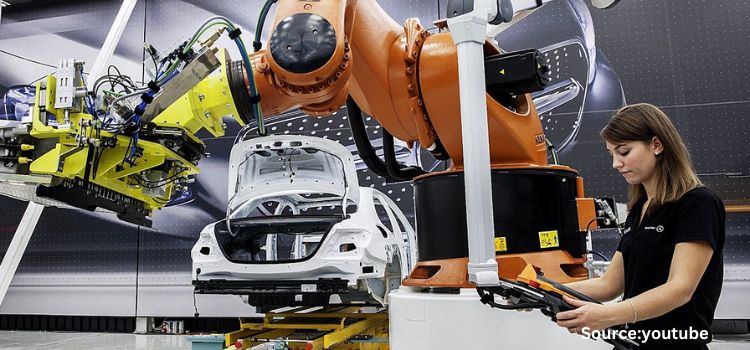
China Automotive AI Market by Component (Hardware, Software, and Services), by Technology (Machine Learning & Deep Learning, Computer Vision, and Natural Language Processing), and by Application (Semi-Autonomous and Fully Autonomous) - Opportunity Analysis and Industry Forecast, 2024– 2030
Industry: Automotive & Transportation | Publish Date: 04-Apr-2024 | No of Pages: 101 | No. of Tables: 71 | No. of Figures: 36 | Format: PDF | Report Code : N/A
US Tariff Impact on China Automotive AI Market
Trump Tariffs Are Reshaping Global Business
Market Definition
The China Automotive AI Market size was valued at USD 326.0 million in 2023, and is predicted to reach USD 1699.0 million by 2030, at a CAGR of 26.6% from 2024 to 2030. Automotive Artificial Intelligence, or Automotive AI, refers to the application of machine learning and artificial intelligence technologies in the design, development, and operation of vehicles and related systems within the automotive industry. Automotive AI consists a wide range of applications, including autonomous driving, advanced driver assistance systems (ADAS), predictive maintenance, natural language processing for in-car voice recognition, and improving the overall efficiency and safety of vehicles. This technology enables vehicles to perceive their surroundings, make decisions, and interact with drivers and passengers. This further enhances the driving experience, safety, and efficiency of automotive systems.
Increasing Technological Advancements in Automotive AI Fuels the Market Expansion
The automotive industry is experiencing significant progress driven by rapid advancements in artificial intelligence (AI). Breakthroughs in algorithms, machine learning, and deep learning techniques are integral to the development of smarter and more capable vehicles. Machine learning facilitates the adaptive learning process for cars, while deep learning, characterized by intricate neural networks, enhances critical capabilities such as image and speech recognition, vital for advanced driver assistance systems (ADAS) and in-car infotainment. These technological strides not only enhance the performance of existing AI applications, such as predictive maintenance and optimized fuel efficiency, but also pave the way for innovative features. Automotive manufacturers are actively incorporating the latest AI capabilities to maintain competitiveness and fulfil consumer expectations for heightened safety, convenience, and an overall superior driving experience. The insistent evolution of AI technologies serves as a driving force behind the expansive growth of the automotive AI market.
Surge in Connected Vehicles is Driving the Adoption of Automotive AI
The automotive industry is witnessing a notable increase in the demand for connected vehicles, marking a pivotal driver for the widespread adoption of Artificial Intelligence (AI). Connected vehicles, leveraging advanced communication technologies and the Internet of Things (IoT), enable real-time data exchange and improved user experiences. In response to this trend, AI plays a crucial role in processing and analyzing the extensive data generated by connected vehicles. Machine learning algorithms contribute to insights into user behavior, traffic patterns, and vehicle performance. This integration of AI in connected vehicles results in features such as predictive maintenance, remote diagnostics, and intelligent navigation systems, transforming traditional automobiles into smart, data-driven platforms. As the demand for connectivity continues to rise, the automotive industry is increasingly relying on AI to deliver vehicles that are not only connected but also smarter, safer, and more efficient.
Data Privacy and High Cost Associated with Automotive AI Restrains the Market Growth
The expansion of the automotive AI market is hindered by collective challenges, encompassing data privacy concerns and elevated costs. Consumers express apprehension regarding the collection, utilization, and safeguarding of their personal data by AI systems in vehicles, prompting a call for more rigorous data privacy measures. Moreover, the substantial expenses associated with the development and integration of AI in vehicles can contribute to escalated vehicle prices, posing a potential impediment to market adoption, particularly among price-sensitive consumers. Achieving a delicate balance between addressing data privacy apprehensions and managing costs is imperative for fostering widespread acceptance and facilitating the growth of automotive AI technologies.
Integration of Augmented Reality (AR) in Vehicles is Expected to Create Opportunity Growth for the Market
Augmented Reality (AR) in vehicles represents a cutting-edge application of artificial intelligence (AI) that focuses on enriching the driver's experience and safety. By integrating AI algorithms and visual overlays into the driver's field of view, typically through Head-Up Displays (HUDs) on windshields, AR enhances situational awareness on the road. AI-powered object recognition ensures the identification and highlighting of pedestrians, cyclists, and road signs, aiding the driver in navigating complex traffic scenarios. Navigation instructions, traffic alerts, and critical safety information are seamlessly displayed, reducing the need for the driver to shift attention away from the road. This technology also extends to interactive controls, allowing for touchless gestures or voice commands, further minimizing distractions.
Competitive Landscape
The market players operating in the China automotive AI market include NVIDIA Corporation, Alphabet, Inc., Intel Corporation, Microsoft Corporation, IBM Corporation, Qualcomm, Inc., Tesla, Inc., BMW AG, Micron Technology, Xilinx, Inc.
China Automotive AI Market Key Segments
By Component
-
Hardware
-
Software
-
Services
By Technology
-
Machine Learning & Deep Learning
-
Computer Vision
-
Natural Language Processing
By Application
-
Semi-Autonomous
-
Fully Autonomous
REPORT SCOPE AND SEGMENTATION:
|
Parameters |
Details |
|
Market Size in 2023 |
USD 326.0 Million |
|
Revenue Forecast in 2030 |
USD 1699.0 Million |
|
Growth Rate |
CAGR of 26.6% from 2024 to 2030 |
|
Analysis Period |
2023–2030 |
|
Base Year Considered |
2023 |
|
Forecast Period |
2024–2030 |
|
Market Size Estimation |
Million (USD) |
|
Growth Factors |
|
|
Companies Profiled |
10 |
|
Market Share |
Available for 10 companies |
|
Customization Scope |
Free customization (equivalent up to 80 working hours of analysts) after purchase. Addition or alteration to country, regional, and segment scope. |
|
Pricing and Purchase Options |
Avail customized purchase options to meet your exact research needs. |
KEY PLAYERS
-
NVIDIA Corporation
-
Alphabet, Inc.
-
Intel Corporation
-
Microsoft Corporation
-
IBM Corporation
-
Qualcomm, Inc.
-
Tesla, Inc.
-
BMW AG
-
Micron Technology
-
Xilinx, Inc.

















 Speak to Our Analyst
Speak to Our Analyst





















